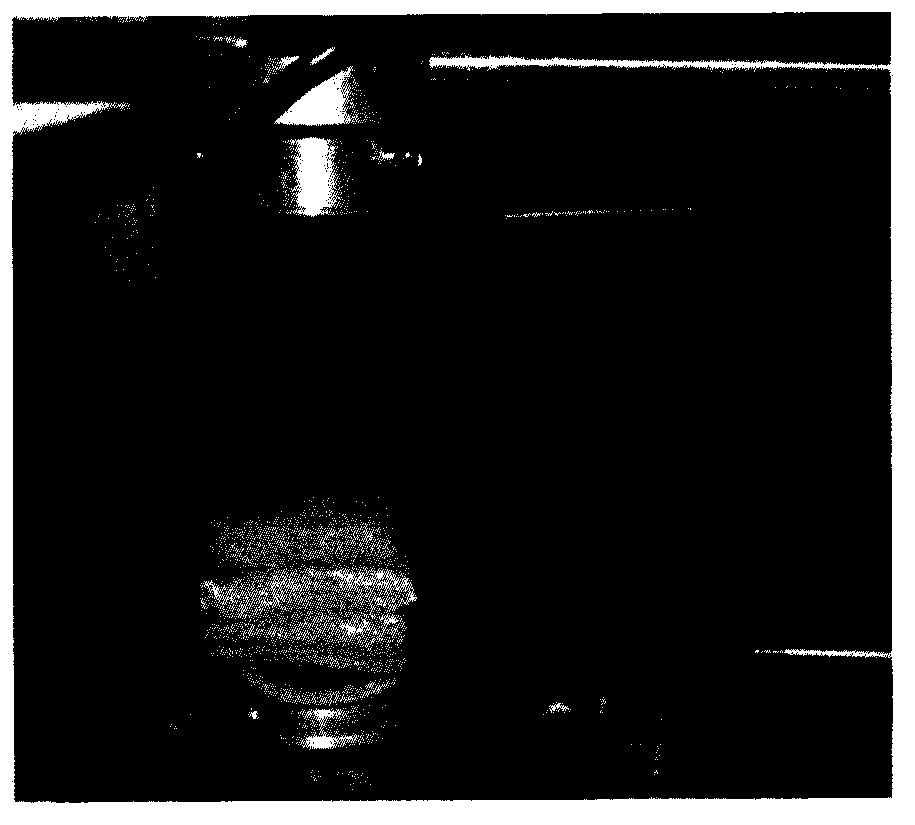Novel application of polypyrrole nanoparticle as contrast agent for photoacoustic imaging
A polypyrrole nanometer and photoacoustic imaging technology, which is applied in the field of biomedical materials, can solve the problems of biocompatibility and stability in the synthesis process of low photothermal conversion efficiency, and achieve efficient and stable near-infrared photothermal effect, size controllable, Efficient and stable absorption effect
- Summary
- Abstract
- Description
- Claims
- Application Information
AI Technical Summary
Problems solved by technology
Method used
Image
Examples
Embodiment 1
[0021] Setup of experimental device: Q-switched Nd:YAG laser (LS-2137 / 2, LOTIS TII, Minsk, Belarus) and pump adjustable Ti sapphire laser (LT-2211A, LOTIS TII, Minsk, Belarus) were used in the experiment The photoacoustic signal is generated as the excitation light source, and the laser is uniformly irradiated on the test sample through the ground glass. In the experiment, an 808nm near-infrared pulsed laser with a pulse frequency of 10Hz was selected, and the intensity of the incident light irradiated on the surface of the test sample was controlled to be lower than 10mJ cm -2 . In the experiment, a 2.25MHz unfocused ultrasonic probe was used to detect the ultrasonic signal generated by the test sample. In order to reduce the attenuation of the ultrasonic signal, both the test sample and the probe were immersed in a water tank, and a stepping motor was used to make the ultrasonic probe rotate horizontally around the test sample in a circle with a radius of 12 cm. The experi...
Embodiment 2
[0023]Preparation of polypyrrole nanoparticles (PPy NPs): Weigh 1.5g PVA into 20mL deionized water, heat to 60°C, and return to room temperature and stir after it is fully dissolved. Weigh 1.24338g FeCl3·6H2O into the above system and stir for 1h, then place in an ice-water bath and stir, add 140μL of pyrrole monomer, and react for 4h. After the reaction, stable dispersed PPy NPs were obtained by centrifugation. The absorption spectrum of the obtained nanoparticles is shown in the attached figure 2 a, shows that polypyrrole nanoparticles have strong absorption in the wavelength range of 650-900nm, and the transmission electron microscope shows that its particle size is about 46nm (attached figure 2 b).
Embodiment 3
[0025] Prepare different concentrations of polypyrrole nanoparticles (120μg / mL, 100μg / mL, 80μg / mL, 60μg / mL, 50μg / mL, 40μg / mL, 30μg / mL, 20μg / mL, 10μg / mL) and irradiate with 808nm pulsed laser Next, the device of Example 1 was used to detect the photoacoustic signal generation ability of the sample. The experimental results show that polypyrrole nanoparticles have excellent responsiveness to 808nm pulsed laser, and the intensity of the generated photoacoustic signal increases linearly with the increase of the concentration of polypyrrole nanoparticles (attached image 3 ), which proves that polypyrrole nanoparticles have the potential as a contrast agent for photoacoustic imaging.
PUM
 Login to View More
Login to View More Abstract
Description
Claims
Application Information
 Login to View More
Login to View More - R&D
- Intellectual Property
- Life Sciences
- Materials
- Tech Scout
- Unparalleled Data Quality
- Higher Quality Content
- 60% Fewer Hallucinations
Browse by: Latest US Patents, China's latest patents, Technical Efficacy Thesaurus, Application Domain, Technology Topic, Popular Technical Reports.
© 2025 PatSnap. All rights reserved.Legal|Privacy policy|Modern Slavery Act Transparency Statement|Sitemap|About US| Contact US: help@patsnap.com



